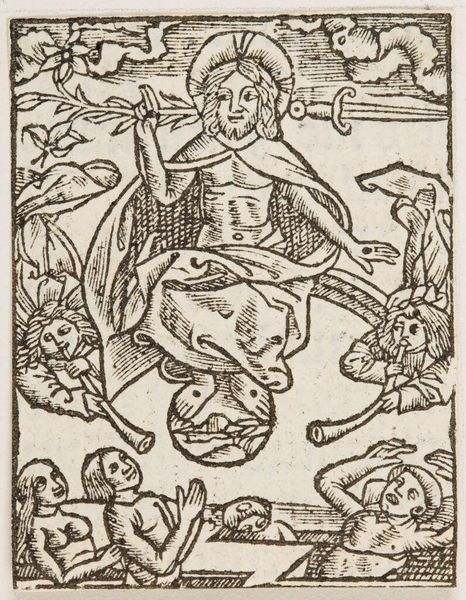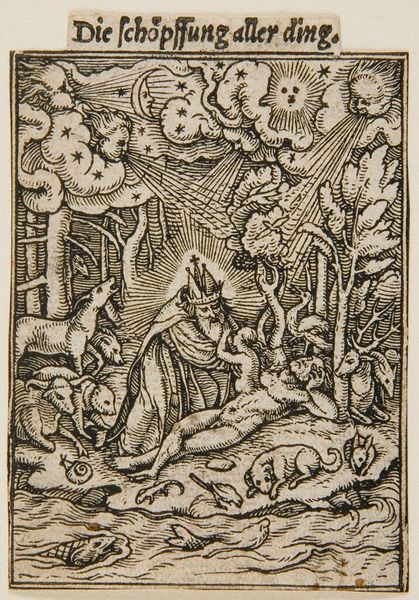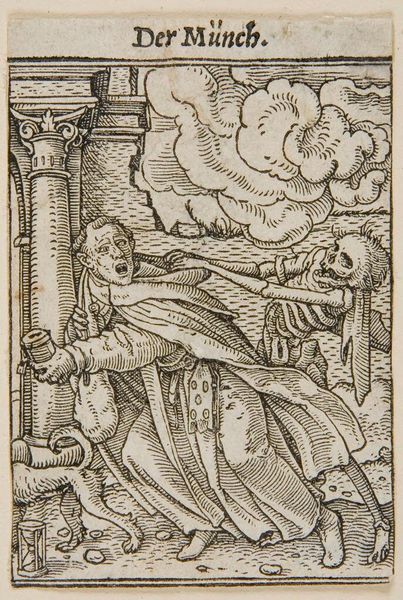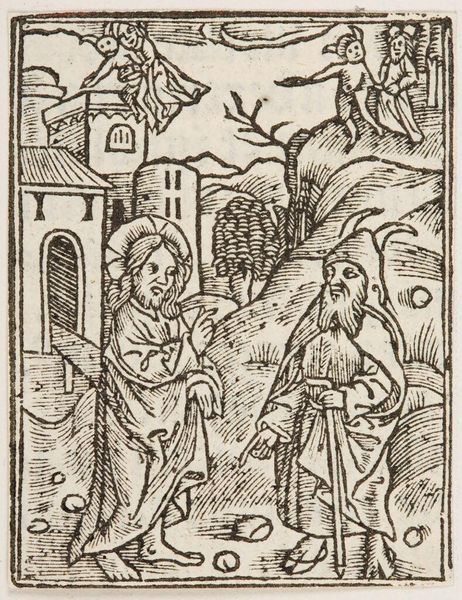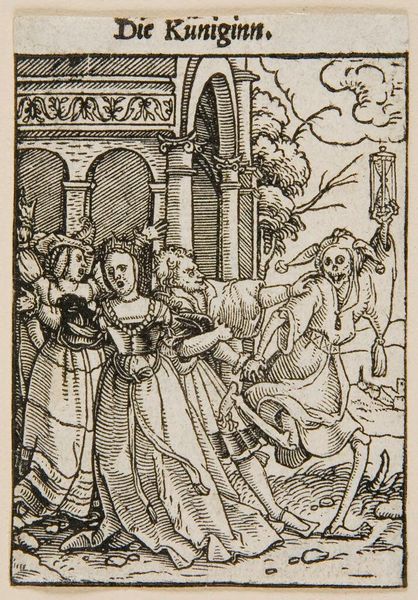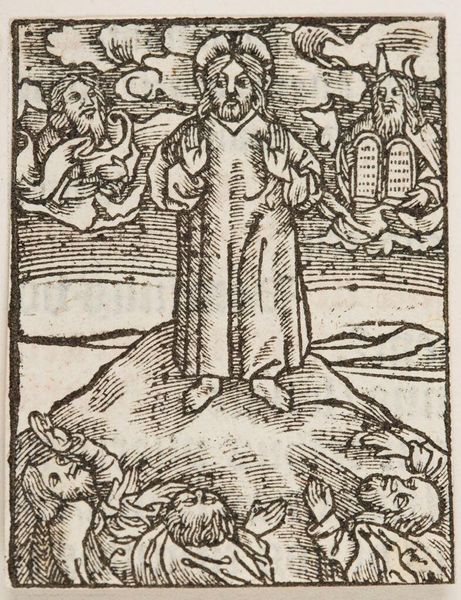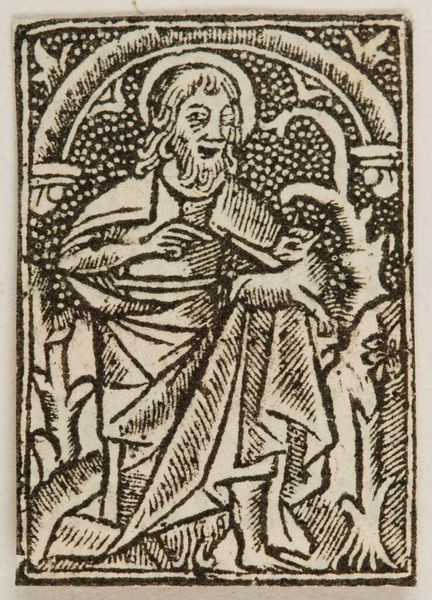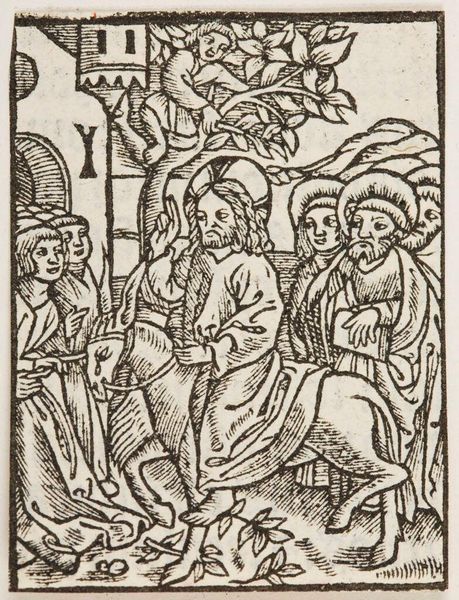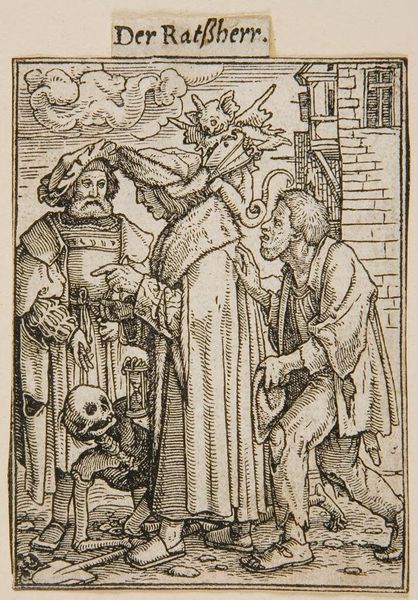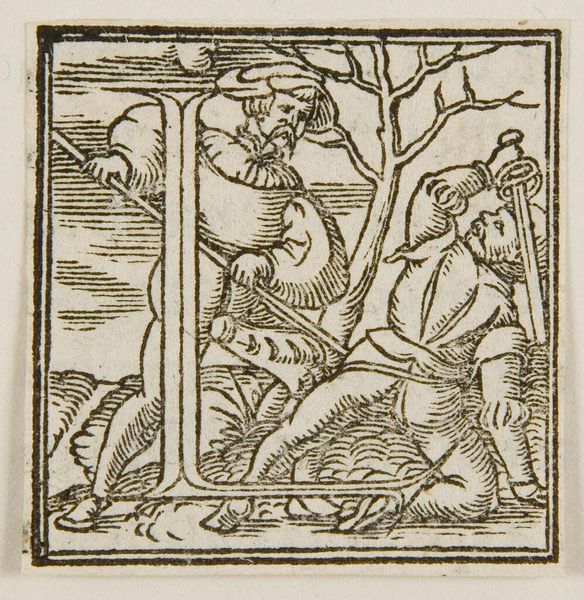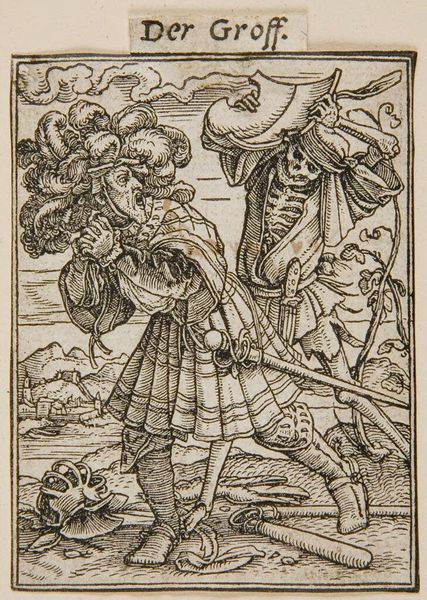
Copyright: CC0 1.0
Curator: Look at this woodcut, "The Abbot," by Hans Holbein the Younger. It depicts a scene filled with stark contrast. Editor: My immediate reaction is that the scene feels almost theatrical, with that skeleton looming. The composition itself is quite dynamic, isn't it? Curator: Indeed. Holbein masterfully uses the visual language of the Danse Macabre to critique power structures in the 16th century. Here, the Abbot’s status cannot protect him from mortality. Editor: The hourglass in the tree is a nice touch, and the linear quality is particularly striking. It amplifies the drama, almost like stage lighting. Curator: Right, and the rigid lines that render the figures almost caricature the era’s social hierarchy and the Church’s perceived failings. It is a poignant commentary on life's ephemeral nature. Editor: It’s fascinating how Holbein’s approach to the formal elements underscores such powerful social commentary. Curator: Absolutely. It’s a potent reminder that art can simultaneously possess aesthetic allure and profound social critique.
Comments
No comments
Be the first to comment and join the conversation on the ultimate creative platform.
